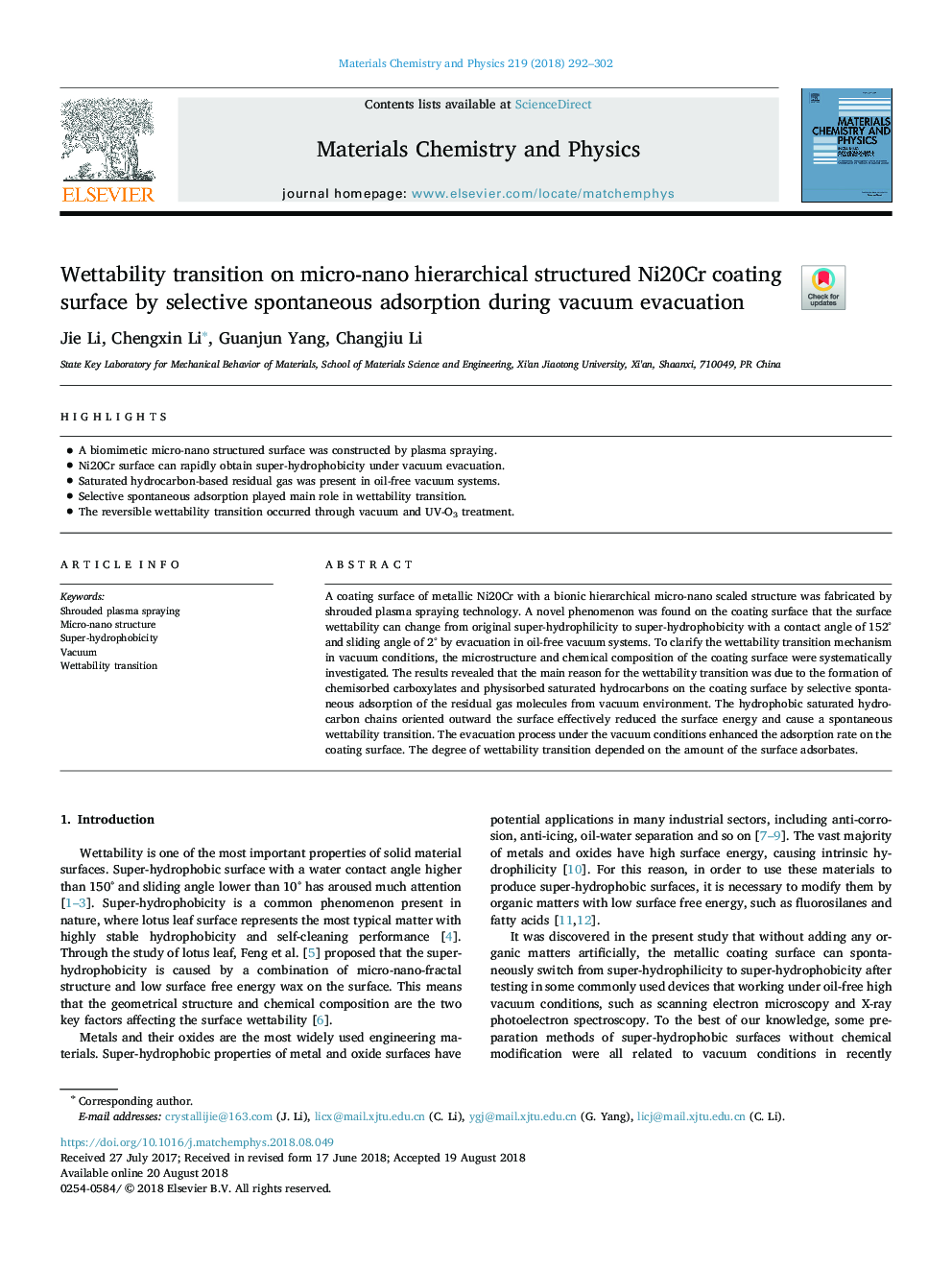| Article ID | Journal | Published Year | Pages | File Type |
|---|---|---|---|---|
| 11006871 | Materials Chemistry and Physics | 2018 | 11 Pages |
Abstract
A coating surface of metallic Ni20Cr with a bionic hierarchical micro-nano scaled structure was fabricated by shrouded plasma spraying technology. A novel phenomenon was found on the coating surface that the surface wettability can change from original super-hydrophilicity to super-hydrophobicity with a contact angle of 152° and sliding angle of 2° by evacuation in oil-free vacuum systems. To clarify the wettability transition mechanism in vacuum conditions, the microstructure and chemical composition of the coating surface were systematically investigated. The results revealed that the main reason for the wettability transition was due to the formation of chemisorbed carboxylates and physisorbed saturated hydrocarbons on the coating surface by selective spontaneous adsorption of the residual gas molecules from vacuum environment. The hydrophobic saturated hydrocarbon chains oriented outward the surface effectively reduced the surface energy and cause a spontaneous wettability transition. The evacuation process under the vacuum conditions enhanced the adsorption rate on the coating surface. The degree of wettability transition depended on the amount of the surface adsorbates.
Related Topics
Physical Sciences and Engineering
Materials Science
Electronic, Optical and Magnetic Materials
Authors
Jie Li, Chengxin Li, Guanjun Yang, Changjiu Li,
